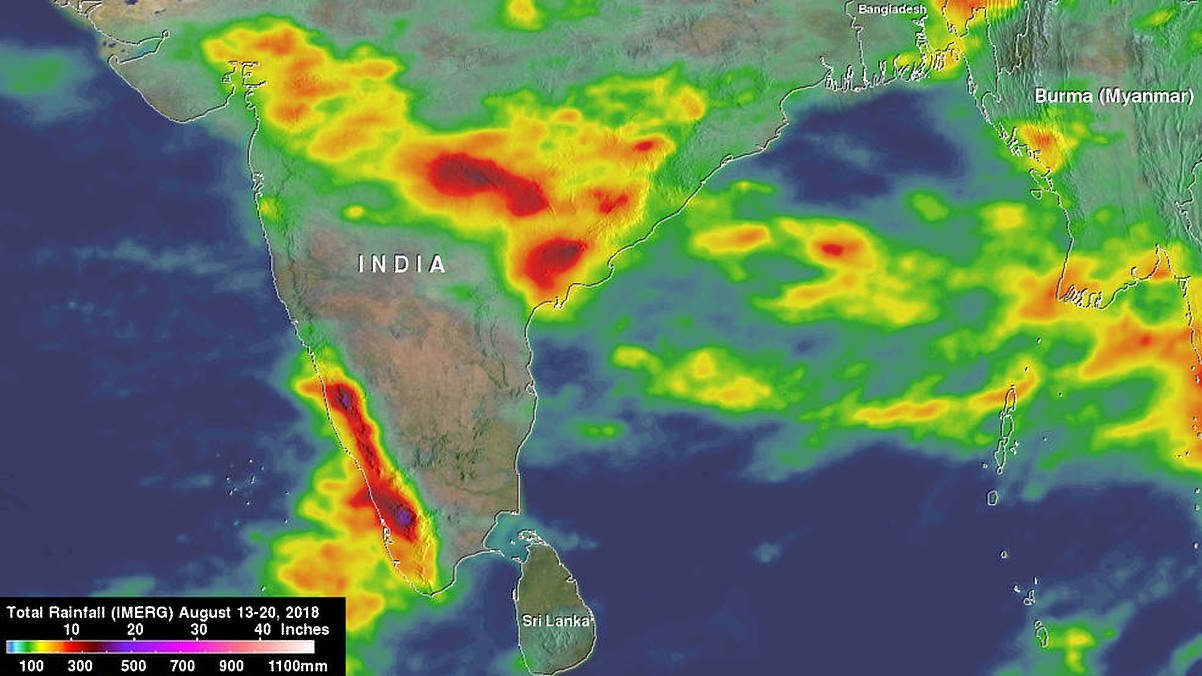NASA provided estimates on the monsoon rainfall that affected India from 13th to 20th August. This year’s above average monsoon rainfall resulted in severe floods in parts of India. Kerala took most of the brunt, with almost 350 fatalities have been reported and nearly 800,000 people have been displaced.
Summer monsoon is a regular feature of this time in India, and it usually brings heavy rainfall to the region. However, areas of low pressure can develop periodically within the general monsoon trough and result in even more rain.
Although it is the extreme Himalayan topography located in the north that usually contributes to the heavy rains. Western Ghats have the same effect on the southwest coast of India. These Ghats happen to be much smaller than the Himalayas, but they run parallel to the West Coast of India with some of the peaks over 2,000 meters. The Ghats are located in a way that they enhance rainfall along the West Coast of India.
The Integrated Multi-satellite Retrievals for GPM or IMERG is used to determine precipitation from a combination of passive microwave sensors, including the geostationary IR (infrared) data and GPM’s GMI microwave sensor. GPM- the core satellite of the Global Precipitation Measurement mission- is the result of collaboration between NASA and JAXA, the Japan Aerospace Agency.
The accumulated IMERG rainfall estimates for the period from August 13 to August 20, 2018 showed two bands that signified heavy rain across India. The first band was much broader and extended across the northern part of the peninsula with weekly rainfall rainfall ranging from over 5 inches in the western half of the peninsula, and over 14 inches in parts of Bay of Bengal. The first band is linked with the general monsoon circulation.
The second band, on the other hand, appeared to be more concentrated and intense. It was also more closely aligned to the southwest coast of India and the Western Ghats, where the onshore flow was enhanced by an area of low pressure rooted within the general monsoon. The weekly rainfall in this band is generally over 10 inches with embedded areas over 16 inches. The maximum estimated value from IMERG in this band appeared to be 469 mm (~18.5 inches).

